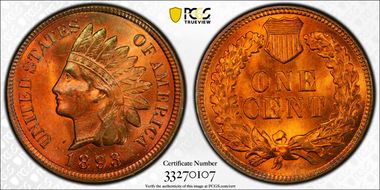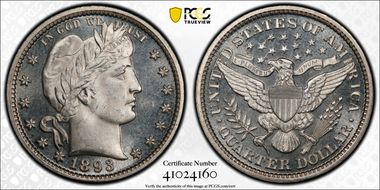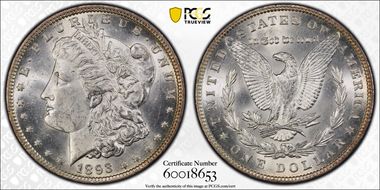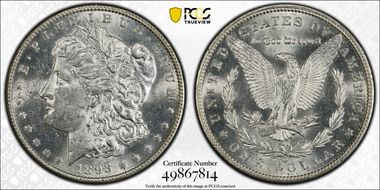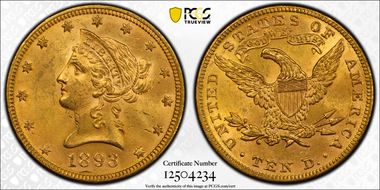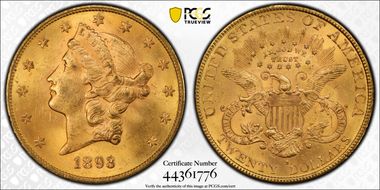Pearl Elizabeth Knight (1893-1972) 的钱币相册
The 1893 Indian Cent has an average mintage more or less. As there are several issues from the series which have significantly lower or higher mintages. This issue appears to be scarce in MS65 condition with no more than a few hundred known in this condition. In MS66 it is even scarcer with about 100 or so examples known. Anything grading higher is considered a condition census coin and less than a few dozen or so known grading higher than MS66.
Circulated grades: The 1893 is readily available in worn grades, but among Philadelphia Mint Morgan dollars the 1893 is one of the more elusive dates. Most circulation strike 1893 dollars are decent strikes but have somewhat "greasy" lustre, not a deep frosty surface. Others are lightly struck at the centers and often have dull lustre. Once again, cherrypicking for quality is advised. Lower range coins are apt to have smaller (less heavy or damaging) bagmarks than seen on many other Morgan dollars. Higher grade coins with minimum bagmarks are often found as well. Most coins known today are in lower ranges such as MS-60 to 62, of which probably 30,000 to 60,000 exist. MS-63 coins, with an estimated population of 10,000 to 20,000, are more elusive. Rarer still are MS-64s, of which possibly 4,000 to 8,000 survive. Rarest of all are MS-65 or better pieces, which exist to the extent of only 400 to 800 coins.
Relatively common in all grades, including gem uncirculated. It is obvious that most examples of this date, and the later dates as well, saw very little circulation since almost every specimen encountered is AU or Unc., with choice examples predominating.
The 1893 $10 has the dubious distinction of having the largest PCGS-certified population of any date in the entire 10 Liberty series (although the 1894 $10 is almost as plentiful). This was one of the dates exported in large quantities to European central banks by the United States government decades ago. Dealers began re-importing them back into America beginning in the late 1970's and 1980s, and the supply has been seemingly inexhaustible. One might expect a large number of Gems from such a large population, but such is not the case. Rather, the overall quality of this date is generally poor, with the vast majority of survivors appearing in MS61 and MS62, suggesting excessive handling and movement of the bags in which the coins were stored. Thus, out of a population of over 17,000 PCGS-certified Mint State examples, only four have earned the MS65 grade
The 1893-S is a moderately scarce date, comparable overall to the 1879-S, 1882-S, 1885-S, 1888-S, 1892-S, 1901-S and 1905-S. Uncs are available more than any other individual grade but choice and gem quality specimens are very scarce, especially gems. I have seen a few really superb examples of this date, the finest being the nearly perfect coin that is in a prominent Dallas bank collection.




















